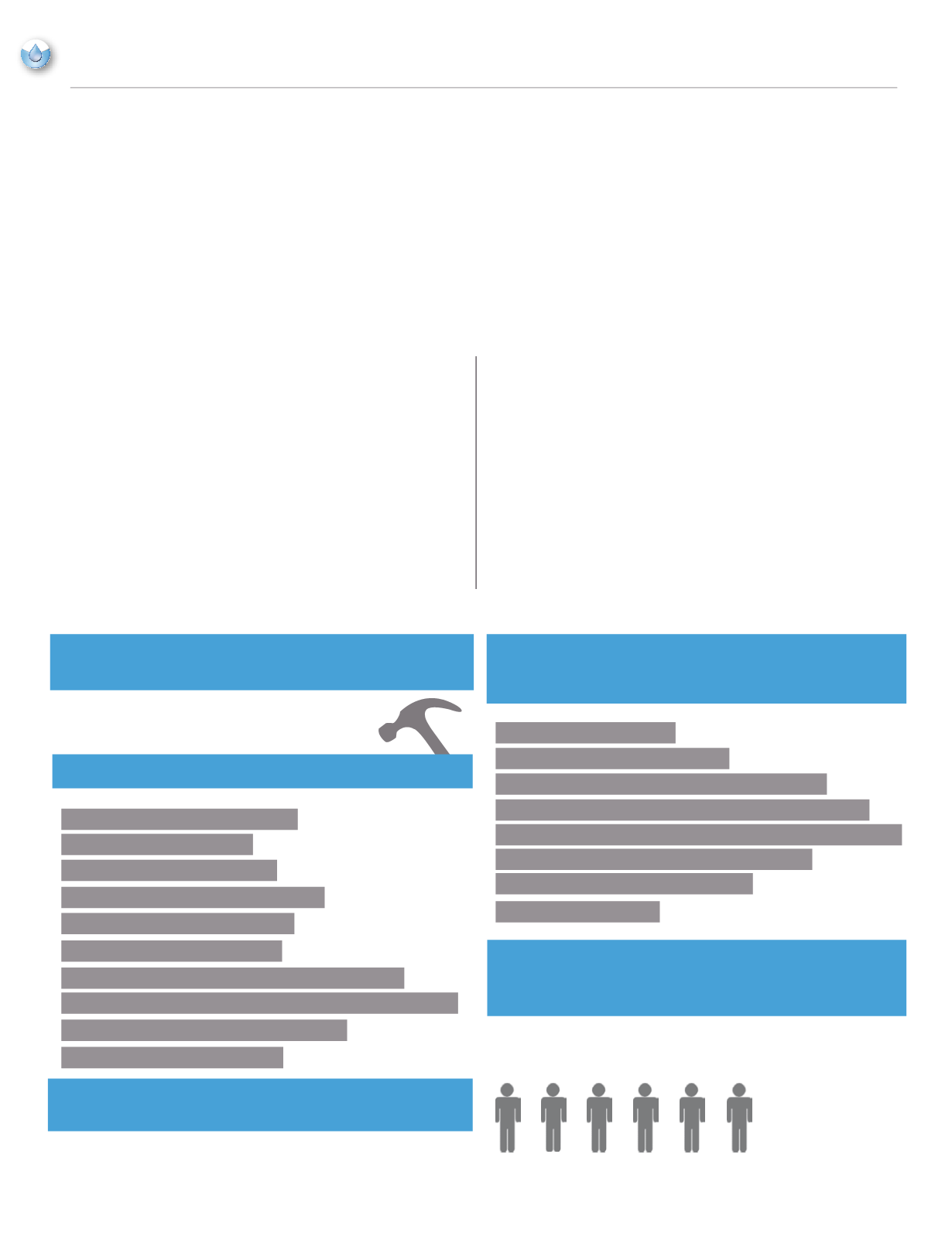
T
Stage 2 DBPR:
By Christyn Fertenbaugh, Public Water Supply Section, NC DENR
Successful Collaboration Efforts with the NCRWA
Towards the Completion of Compliance Monitoring Plans
for Schedule 3 & 4 Systems
Stage 2 Compliance Statistics
Total number of workshops that NCRWA
attended and/or facilitated.
Ten
workshops completed to date.
Number of attendees per workshop.
Carthage
27
Statesville 18
Kannapolis
21
Marion
29
Dunn
24
Newport
22
Maggie Valley
48
Winston Salem
58
Oxford
34
Elizabethtown
22
Number of on-site help visits with plans
submitted through NCRWA
250+
Approximate number of visits performed
per month by NCRWA staff directly related
to CMP’s
January
10
February
20
March
40
April
55
May
65
June
35
July
25
August 4 (to date)
Number of NCRWA staff directly
involved with CMP efforts on a
regular basis
6
extremely dedicated employees
16
NCRWA.COM |
Fall 2013
feature
he Stage 2 Disinfection Byproducts Rule (Stage 2 DBPR) was
released by the EPA in January 2006. The intent of this Rule
is to supplement the existing regulations by basing monitoring
requirements on population and source water type only. Stage 2
also requires systems to meet the existing MCL requirements for
TTHMs and HAA5s at each specific location, rather than allowing
systems to continue averaging all location results together. Systems
were required to complete an Initial Distribution System Evaluation
(IDSE) to locate sites with the highest TTHM and HAA5 levels,
unless they obtained 40/30 Certification or a Very Small System
Waiver in lieu of the IDSE. Once this was completed, systems were
further required to complete a Compliance Monitoring Plan (CMP)
to indicate which sites they will sample under Stage 2. Public
Water Supply Section (PWS Section) staff developed two templates
of the CMP form; the standard form is used by systems treating
surface water, and the short form is for all purchase systems and
groundwater-only systems on Schedules 3 & 4. PWS Section set
a due date for the CMPs for the Schedule 3 & 4 systems as July 1,
2013, in an effort to allow the time needed to review the plans prior
to the compliance monitoring start date of October 1, 2013.


